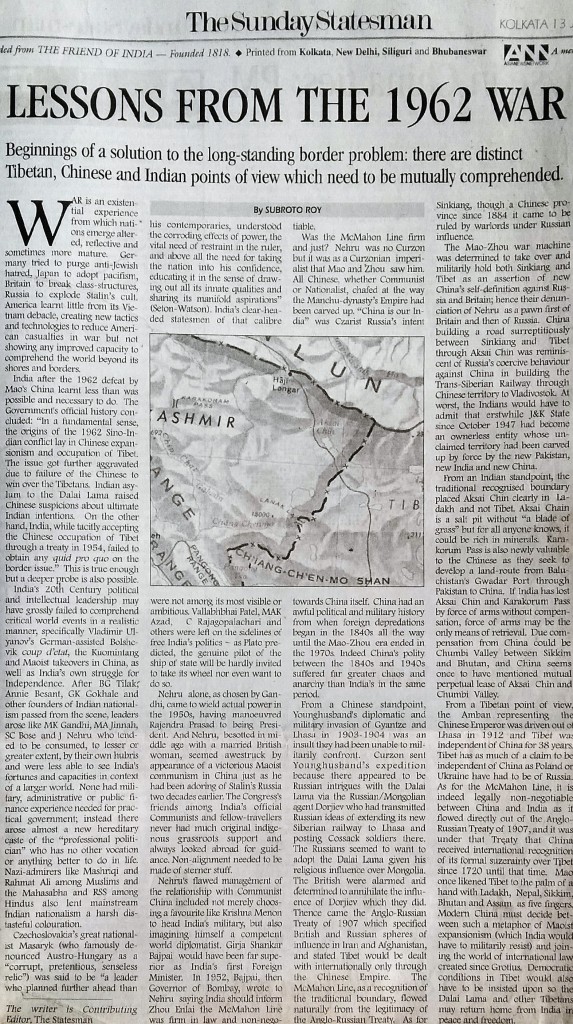Prefatory Note: This is part of a series of articles published in The Statesman since October 2007 and republished here, viz., Understanding China, India-USA Interests, China’s India Aggression, Surrender or Fight?, China’s Commonwealth, Nixon & Mao vs India, China’s India Example and China’s Force and Diplomacy. See https://independentindian.com/2009/09/19/my-ten-articles-on-china-tibet-xinjiang-taiwan-in-relation-to-india/
Lessons from the 1962 War
Beginnings of a solution to the long-standing border problem: there are distinct Tibetan, Chinese and Indian points of view that need to be mutually comprehended.
SUBROTO ROY
First published in The Sunday Statesman, January 13 2008, Editorial Page Special Article


